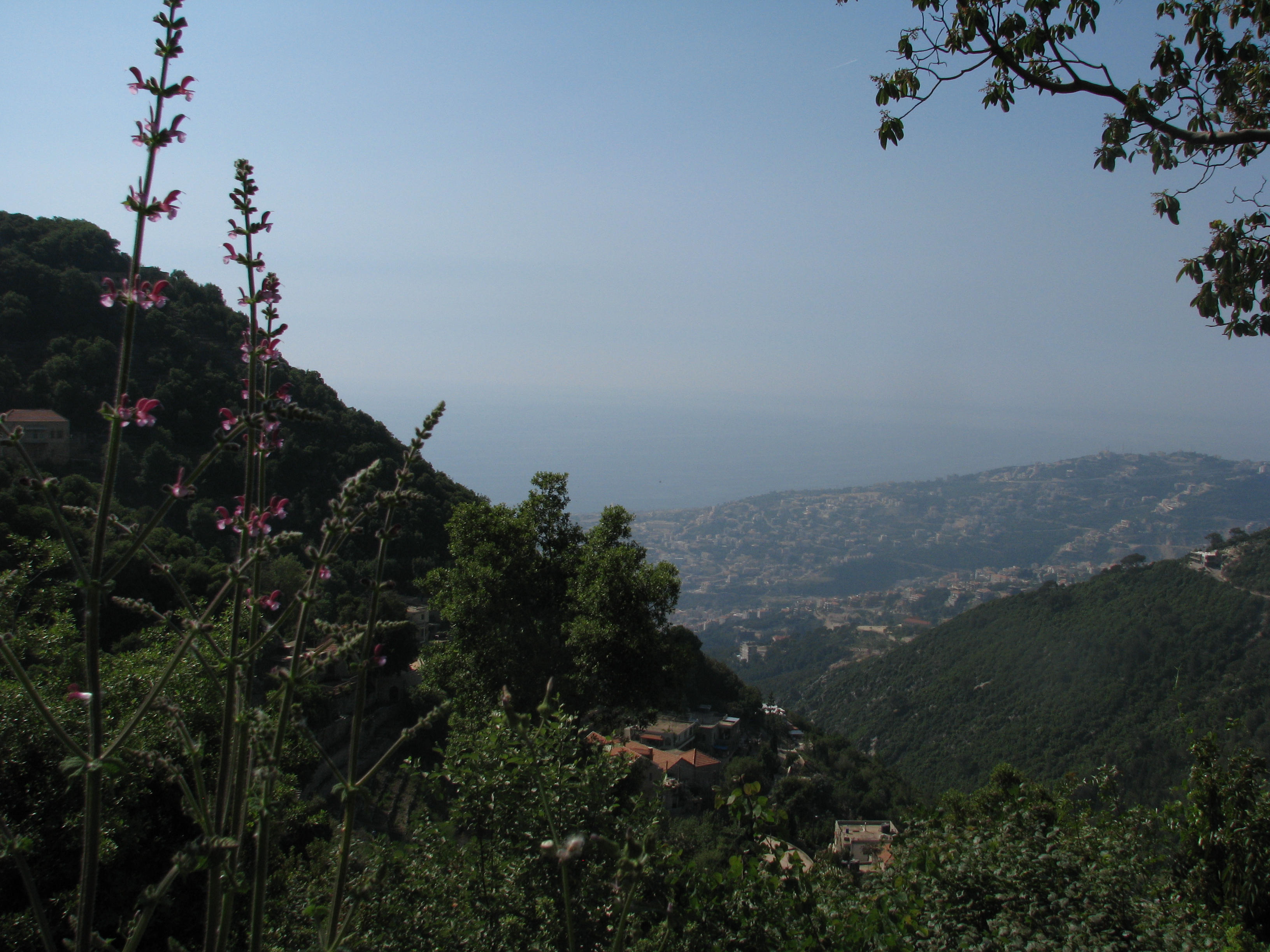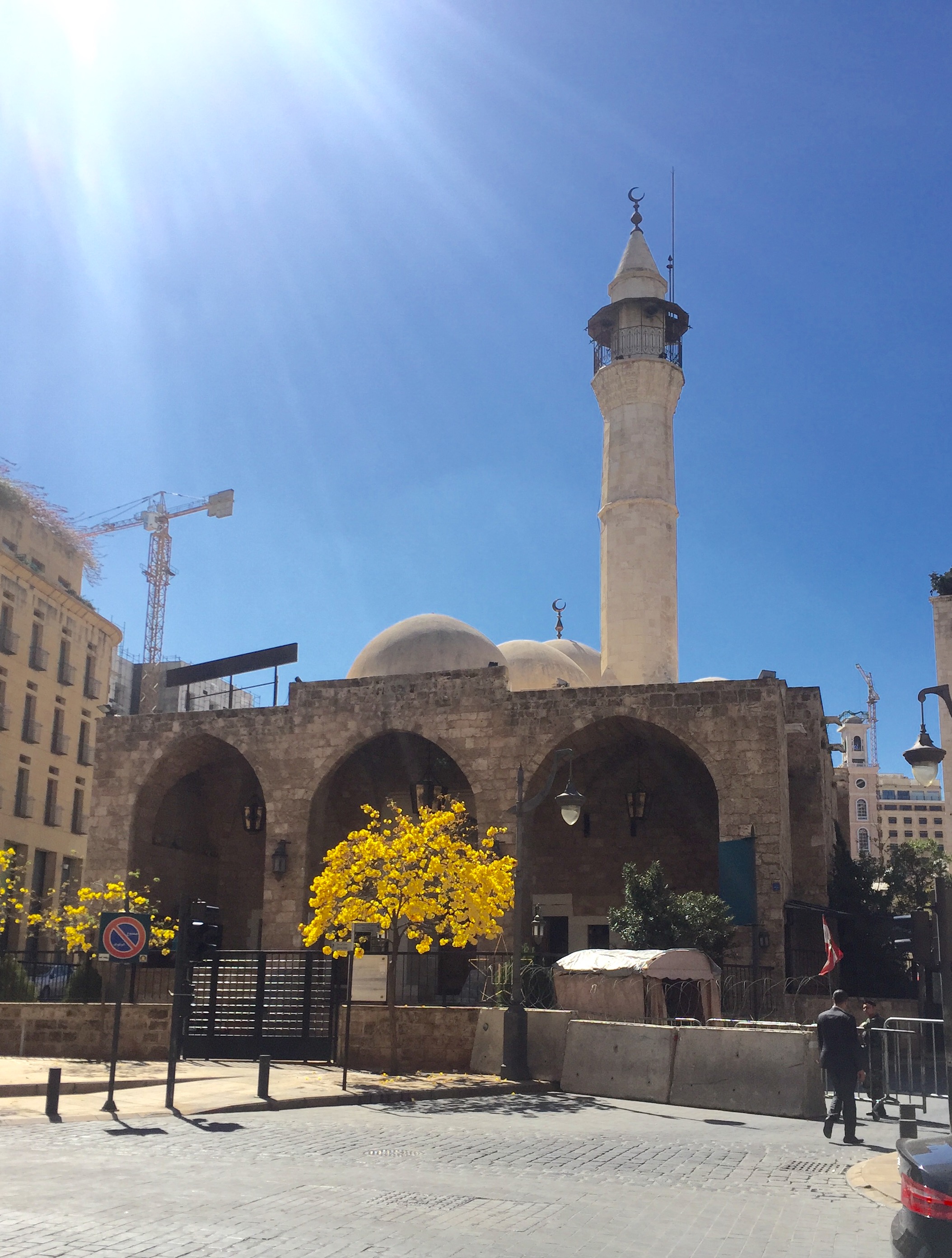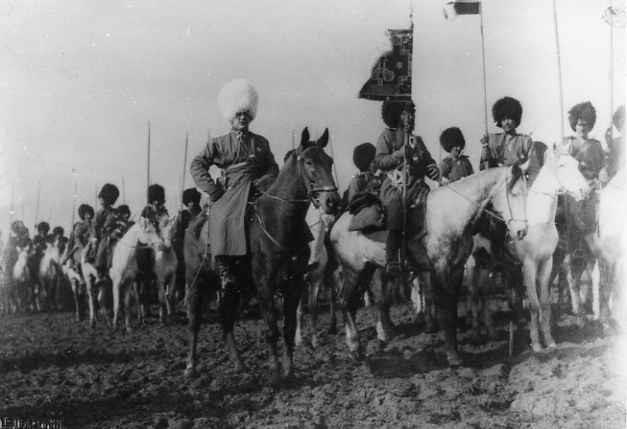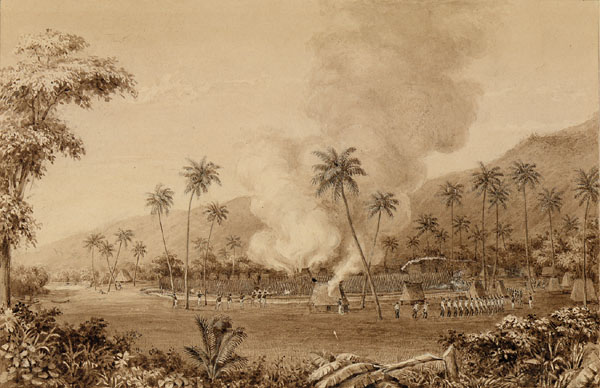|
Kisrawan Campaigns (1292–1305)
The Kisrawan campaigns were a series of Mamluk military expeditions against the mountaineers of the Kisrawan, as well as the neighboring areas of Byblos and the Jurd, in Mount Lebanon. The offensives were launched in 1292, 1300 and 1305. The mountaineers were Shia Muslim, Alawite, Maronite and Druze tribesmen who historically acted autonomously of any central authority. The Maronites in particular had maintained close cooperation with the Crusader state in Tripoli. After the fall of Tripoli to the Mamluks in 1289, the mountaineers would often block the coastal road between Tripoli and Beirut, prompting the first Mamluk expedition in 1292 under the viceroy of Egypt Badr al-Din Baydara. During that campaign, the Mamluks, spread along the coastal road and cut off from each other at various points, were constantly harried by the mountaineers, who confiscated their weapons, horses and money. Baydara withdrew his men only after paying off the mountain chiefs. The second campaign w ... [...More Info...] [...Related Items...] OR: [Wikipedia] [Google] [Baidu] |
Kisrawan
The Kisrawan or Keserwan is the region in Mount Lebanon straddling the Mediterranean coast north of the Lebanese capital Beirut and south of the Ibrahim River. It is administered by the eponymous Keserwan District, part of the Keserwan-Jbeil Governorate. In the 12th–13th centuries it was a borderland between the Crusader states along the coast and the Muslim governments in Damascus. Its inhabitants at that time were Twelver Shia Muslims, Alawites, Druze and Maronite Christians. While the Kisrawanis acted independent of any outside authority, they often cooperated with the Crusader lords of Tripoli and Byblos. Soon after the Sunni Muslim Mamluks conquered the Crusader realms, they launched a series of punitive expeditions in 1292–1305 against the mountaineers of the Kisrawan. The assaults caused wide scale destruction and displacement, with Maronites from northern Mount Lebanon gradually migrating to depopulated villages in the region. The Mamluks established Turkmen settl ... [...More Info...] [...Related Items...] OR: [Wikipedia] [Google] [Baidu] |
Crusader State
The Crusader States, also known as Outremer, were four Catholic realms in the Middle East that lasted from 1098 to 1291. These feudal polities were created by the Latin Catholic leaders of the First Crusade through conquest and political intrigue. The four states were the County of Edessa (10981150), the Principality of Antioch (10981287), the County of Tripoli (11021289), and the Kingdom of Jerusalem (10991291). The Kingdom of Jerusalem covered what is now Israel and Palestine, the West Bank, the Gaza Strip, and adjacent areas. The other northern states covered what are now Syria, south-eastern Turkey, and Lebanon. The description "Crusader states" can be misleading, as from 1130 very few of the Frankish population were crusaders. The term Outremer, used by medieval and modern writers as a synonym, is derived from the French for ''overseas''. In 1098, the armed pilgrimage to Jerusalem passed through Syria. The crusader Baldwin of Boulogne replaced the Greek Orthodox ruler o ... [...More Info...] [...Related Items...] OR: [Wikipedia] [Google] [Baidu] |
Ghosta - Panoramio
Ghosta may refer to: * Ghosta, Bihar, India * Ghosta, Lebanon Ghosta ( ar, غوسطا; also spelled ''Ghusta'') is a municipality in the Keserwan District of the Keserwan-Jbeil Governorate of Lebanon. It is located 36 kilometers north of Beirut. Ghosta's average elevation is 950 meters above sea level and its ..., Lebanon * Ghosta, Afghanistan, a small village on the Kabul River {{Dab ... [...More Info...] [...Related Items...] OR: [Wikipedia] [Google] [Baidu] |
Sunni Islam In Lebanon
Lebanese Sunni Muslims ( ar, المسلمون السنة اللبنانيين) refers to Lebanese people who are adherents of the Sunni branch of Islam in Lebanon, which is one of the largest denomination in Lebanon tied with Shias. Sunni Islam in Lebanon has a history of more than a millennium. According to a CIA 2018 study, Lebanese Sunni Muslims constitute an estimated 30.6% of Lebanon's population. (However, in a country that had last census in 1932, it is difficult to have correct population estimates) The Lebanese Sunni Muslims are highly concentrated in Lebanon's capital city - Beirut (West Beirut /or Beirut II). As well as Tripoli, Sidon, Western Beqaa, and in the countryside of the Akkar, Arsal. And a notable presence in Zahlé, Southern Lebanon, Marjaayoun and Chebaa. Under the terms of an unwritten agreement known as the National Pact between the various political and religious leaders of Lebanon, Sunni notables traditionally held power in the Lebanese state toget ... [...More Info...] [...Related Items...] OR: [Wikipedia] [Google] [Baidu] |
Assaf Dynasty
The Assaf dynasty (also called Banu Assaf) were a Sunni Muslim and ethnic Turkmen dynasty of chieftains based in the Keserwan region of Mount Lebanon in the 14th–16th centuries. They came to the area in 1306 after being assigned by the Bahri Mamluks to guard the coastal region between Beirut and Byblos and to check the power of the mostly Shia Muslim population at the time. During this period, they established their headquarters in Ghazir, which served as the Assafs' base throughout their rule. Under the leadership of Emir Assaf, they were confirmed as the rulers of Keserwan by Sultan Selim I following the Ottoman conquest in 1516. Emir Assaf died two years later and was succeeded by his son Hasan, who was in turn killed by his brother Qa'itbay. The latter ruled Keserwan until his death without children in 1523, after which he was succeeded by Hasan's son Mansur. Mansur had a long reign and was accorded by the Ottomans numerous districts in Mount Lebanon and its environs as t ... [...More Info...] [...Related Items...] OR: [Wikipedia] [Google] [Baidu] |
Ottoman Empire
The Ottoman Empire, * ; is an archaic version. The definite article forms and were synonymous * and el, Оθωμανική Αυτοκρατορία, Othōmanikē Avtokratoria, label=none * info page on book at Martin Luther University) // CITED: p. 36 (PDF p. 38/338) also known as the Turkish Empire, was an empire that controlled much of Southeast Europe, Western Asia, and Northern Africa between the 14th and early 20th centuries. It was founded at the end of the 13th century in northwestern Anatolia in the town of Söğüt (modern-day Bilecik Province) by the Turkoman tribal leader Osman I. After 1354, the Ottomans crossed into Europe and, with the conquest of the Balkans, the Ottoman beylik was transformed into a transcontinental empire. The Ottomans ended the Byzantine Empire with the conquest of Constantinople in 1453 by Mehmed the Conqueror. Under the reign of Suleiman the Magnificent, the Ottoman Empire marked the peak of its power and prosperity, as well a ... [...More Info...] [...Related Items...] OR: [Wikipedia] [Google] [Baidu] |
Turkmen Tribes
The major modern Turkmen tribes are Teke, Yomut, Ersari, Chowdur, Gokleng and Saryk. The most numerous are the Teke. The origin of all of these tribes is traced to 24 ancient Oghuz tribes, among which the Salur tribe played a prominent role as its people are considered the ancestors of a couple of modern Turkmen tribes such as Teke, Yomut and Ersari. Seljuks, Khwarazmians, Qara Qoyunlu, Aq Qoyunlu, Ottomans and Afsharids are also believed to descend from the early Oghuz Turkmen tribes of Qiniq, Begdili, Yiwa, Bayandur, Kayi and Afshar respectively. Tribes Teke Teke is a major and historically one of the most influential modern Turkmen tribes. Teke originated from the Oghuz tribe of Salur in the 11th or 12th century. The tribe is subdivided into two, the Akhal Teke and Mary Teke. British Lt. Col. C.E. Stuart in 1830s also noted a subdivision into four clans, the Wakil (another variant is Wekil), Beg, Suchmuz, and Bukshi: "The Wakil and Beg clans are collectively ... [...More Info...] [...Related Items...] OR: [Wikipedia] [Google] [Baidu] |
Punitive Expedition
A punitive expedition is a military journey undertaken to punish a political entity or any group of people outside the borders of the punishing state or union. It is usually undertaken in response to perceived disobedient or morally wrong behavior by miscreants, as revenge or corrective action, or to apply strong diplomatic pressure without a formal declaration of war (e.g. surgical strike). In the 19th century, punitive expeditions were used more commonly as pretexts for colonial adventures that resulted in annexations, regime changes or changes in policies of the affected state to favour one or more colonial powers. Stowell (1921) provides the following definition: When the territorial sovereign is too weak or is unwilling to enforce respect for international law, a state which is wronged may find it necessary to invade the territory and to chastise the individuals who violate its rights and threaten its security. Historical examples *In the 5th century BC, the Achaemenid ... [...More Info...] [...Related Items...] OR: [Wikipedia] [Google] [Baidu] |
Damascus
)), is an adjective which means "spacious". , motto = , image_flag = Flag of Damascus.svg , image_seal = Emblem of Damascus.svg , seal_type = Seal , map_caption = , pushpin_map = Syria#Mediterranean east#Arab world#Asia , pushpin_label_position = right , pushpin_mapsize = , pushpin_map_caption = Location of Damascus within Syria , pushpin_relief = 1 , coordinates = , subdivision_type = Country , subdivision_name = , subdivision_type1 = Governorate , subdivision_name1 = Damascus Governorate, Capital City , government_footnotes = , government_type = , leader_title = Governor , leader_name = Mohammad Tariq Kreishati , parts_type = Municipalities , parts = 16 , established_title = , established_date ... [...More Info...] [...Related Items...] OR: [Wikipedia] [Google] [Baidu] |
Battle Of Wadi Al-Khaznadar
The Battle of Wadi al-Khaznadar, also known as the Third Battle of Homs, was a Mongol victory over the Mamluks in 1299.''Wadi 'L-Khaznadar'', R. Amitai, The Encyclopaedia of Islam, Vol XI, ed. P.J.Bearman, T.Bianquis, C.E.Bosworth, E. van Donzel and W.P.Heinrichs, (Brill, 2002), 18. Background In 1260, Hulagu Khan had invaded the Middle East all the way to Palestine. Before he could follow up with an invasion of Egypt, he was called back to Mongolia. He left two tumens (20,000 men) under general Kitbuqa. This army was defeated at the Battle of Ain Jalut and the Mongols were expelled from Palestine and Syria. Hulagu returned with another force, but his invasion was permanently delayed after his cousin Berke of the Golden Horde (who had converted to Islam) secretly allied with the Mamluks and instigated a civil war in the Caucasus. After recovering the Levant, the Mamluks went on to invade the Armenian Kingdom of Cilicia and the Seljuk Sultanate of Rum, both Mongol protectorates, ... [...More Info...] [...Related Items...] OR: [Wikipedia] [Google] [Baidu] |
Ilkhanate
The Ilkhanate, also spelled Il-khanate ( fa, ایل خانان, ''Ilxānān''), known to the Mongols as ''Hülegü Ulus'' (, ''Qulug-un Ulus''), was a khanate established from the southwestern sector of the Mongol Empire. The Ilkhanid realm, officially known as ''Iranzamin'' (), was ruled by the Mongols, Mongol House of Hulagu. Hulagu Khan, the son of Tolui and grandson of Genghis Khan, inherited the Middle Eastern part of the Mongol Empire after his brother Möngke Khan died in 1260. Its core territory lies in what is now part of the countries of Iran, Azerbaijan, and Turkey. At its greatest extent, the Ilkhanate also included parts of modern Iraq, Syria, Armenia, Georgia (country), Georgia, Afghanistan, Turkmenistan, Pakistan, part of modern Dagestan, and part of modern Tajikistan. Later Ilkhanate rulers, beginning with Ghazan in 1295, converted to Islam. In the 1330s, the Ilkhanate was ravaged by the Black Death. Its last khan Abu Sa'id (Ilkhanid dynasty), Abu Sa'id died in ... [...More Info...] [...Related Items...] OR: [Wikipedia] [Google] [Baidu] |
Beirut
Beirut, french: Beyrouth is the capital and largest city of Lebanon. , Greater Beirut has a population of 2.5 million, which makes it the third-largest city in the Levant region. The city is situated on a peninsula at the midpoint of Lebanon's Mediterranean coast. Beirut has been inhabited for more than 5,000 years, and was one of Phoenicia's most prominent city states, making it one of the oldest cities in the world (see Berytus). The first historical mention of Beirut is found in the Amarna letters from the New Kingdom of Egypt, which date to the 14th century BC. Beirut is Lebanon's seat of government and plays a central role in the Lebanese economy, with many banks and corporations based in the city. Beirut is an important seaport for the country and region, and rated a Beta + World City by the Globalization and World Cities Research Network. Beirut was severely damaged by the Lebanese Civil War, the 2006 Lebanon War, and the 2020 massive explosion in the ... [...More Info...] [...Related Items...] OR: [Wikipedia] [Google] [Baidu] |







